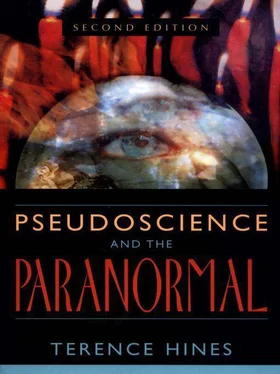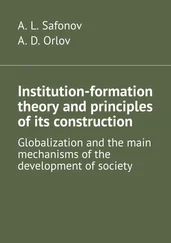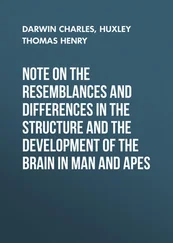One of the greatest misconceptions about the nature of nerve cell function, which was widely accepted in the late 1800s, had to do with the concept of neural inhibition. It is now well known that one neuron can be excited (made more likely to generate a tiny electrical signal) or inhibited (made less likely to generate such a signal) by other neurons. In Freud’s time, such neural inhibition was unknown, and it was believed that all processes in the nervous system were excitatory. It was further believed that the nerves were akin to high-tension lines, constantly bringing energy into the body. That energy had to be expended somehow. It is now known that nerves are much more like telegraph or telephone wires. They use tiny amounts of energy to transmit information. Thus, the problem of what to do with all the energy the nerves bring into the body is not a real problem. But in Freud’s time, this was an important problem, one that influenced psychoanalytic theory deeply. It was to deal with this problem, in fact, that many of the basic constructs of psychoanalytic theory were developed (McCarley and Hobson 1977). McCarley and Hobson (1977; Hobson and McCarley 1977) show, for example, that much of Freud’s view of the nature of dream content was based on his incorrect notions about the way neurons functioned.
Hobson and McCarley’s (Hobson 2001) theory of dream generation, based on knowledge of modern neurophysiology, has been described earlier in this chapter. What is of interest at this point is to note the response this new physiological theory of dream generation received from psychoanalysis. In true pseudoscientific fashion, one major response was “it doesn’t matter.” Like Velikovsky (see chapter 9), who never revised his “theory” in the face of contradictory evidence, and other pseudoscientists who ignore data that conflict with their theories, the response of many psychoanalysts to the refutation of the basis of Freud’s dream theory was to deny that the refutation mattered. One general approach (see LaBruzza 1978; Letters to the Editor 1978) was to claim that mind and brain are different and that knowledge about the function of the brain cannot be used to constrain theories about the nature of cognitive processes. In fact, theories of cognition (of mind, if you will) must be constrained by what is known about the function of the brain. A theory of mind that is inconsistent with what is known about brain function must be wrong. Similarly, a theory of brain function that is inconsistent with what is known about cognitive function is also in need of serious revision. Returning directly to the issue of the validity of psychoanalysis, it is clear that psychoanalytic theory rests on incorrect notions of how the neurons in the brain operate. On those grounds alone, the theory can be rejected.
CLINICAL APPLICATIONS OF PSYCHOANALYSIS
Psychoanalysis was developed to be more than a theory of the mind: It was also developed as a method of treatment for numerous psychological disorders. This section will consider three issues related to the clinical applications of psychoanalysis. The first is the use of psychoanalysts’ clinical experiences as evidence for the validity of psychoanalytic theory. The second is the use of projective tests, because the rationale for these tests rests largely in psychoanalytic theory. The third issue concerns the efficacy of psychoanalytic therapy.
Clinical Experiences As Proof for Psychoanalytic Theory
Psychoanalysts since Freud have argued that the strongest proof of the validity of psychoanalytic theory is to be found in the clinical experiences of actual psychoanalysts. This is the data on which their “science” is founded. These data consist of symbolic interpretations of dreams, free associations, and the like which seem to confirm psychoanalytic theory. The data are taken as strong evidence for the theory. Thus, an analyst might have a male patient whom he believes has unresolved Oedipal feelings. That is, he still has some incestuous sexual desire for his mother. One night the patient dreams that he entered a cozy, familiar home through a window. Further, he was wearing an absurdly large tie at the time. Obviously, such a dream can be interpreted symbolically as a wish to have sexual intercourse with the mother, symbolized by the familiar house. The large tie is a symbolic representation of the erect penis. The serious problems with symbolic interpretations have been discussed earlier in this chapter. The important point here is that interpreting a patient’s dream or free association in such a way that it appears to confirm one’s diagnosis will help convince both the psychoanalyst and the patient that psychoanalytic theory “works.” Numbers of such “correct” interpretations over the years of an analyst’s experience will, understandably, result in a powerful belief that psychoanalytic theory is valid. It is clear, however, that the psychological processes that yield this strong belief in the validity of psychoanalytic theory are the same as the processes that engender strong, but incorrect, beliefs in the validity of the predictions made by psychics, as discussed in chapter 2. The license to interpret symbolically ensures that it will be possible to interpret any dream or action of the patient in a way consistent with the psychoanalyst’s diagnosis. Thus, like the vague psychic predictions that “come true” after the fact, the perceived validity of psychoanalytic theory, at least as far as it is based on data from the clinical situation, is based on the fallacy of personal validation and the P. T. Barnum effect.
Projective Tests and Illusary Correlation
On most projective tests, test takers are presented with some ambiguous stimulus that they must make up a story about or describe. Responses are interpreted, frequently symbolically, and are said to reflect the basic, stable personality characteristics of individuals. The responses can also be used to reveal hidden psychological problems, desires, and anxieties, even if these are lodged in the unconscious. Thus the term projective: the test taker is assumed to project information about personality and any psychological disturbances onto the ambiguous stimulus. The classic example of a projective test is the Rorschach ink blot test (Rorschach 1942), in which test takers are presented with a series of ink blots and asked to tell what each reminds them of. Another type of projective test is one in which test takers produce some nonverbal response. This type of projective test is typified by the Draw-A-Person test in which individuals are simply asked to draw a person. The drawings are then interpreted to reveal personality traits, anxieties, and so forth.
Projective tests are widely used by psychiatrists and psychologists. The important question is whether they actually provide useful information. That is, do they “work” in any objective sense? For a test to work in this sense, it must possess two basic characteristics: it must be both reliable and valid. Briefly, a test is reliable if it gives the same individual close to the same score on two different test administrations. A test is valid if it can be shown to measure what it is claimed to measure. There are numerous ways of measuring reliability and validity that are beyond the scope of this section, but they can be found in any text on psychological testing. Projective tests lack both reliability and validity (Anastasi 1976). Specifically regarding the issue of validity, Anastasi (1988) says, “The accumulation of published studies that have failed to demonstrate any validity for such projective techniques as the Rorschach and the D-A-P (Draw A Person Test) is truly impressive. Yet after five decades of negative results, the status of projective techniques remains substantially unchanged” (p. 621; emphasis in original). Twelve years later Lilienfeld, Wood, and Garb (2000a) published a thorough review of the research on the most widely used projective tests—the Rorschach, the Thematic Apperception Test, and Draw-A-Person techniques. Their conclusion was that these tests had such low validity that they were essentially useless. For a less technical summary of this review, see Lilienfeld, Wood, and Garb (2000b).
Читать дальше












